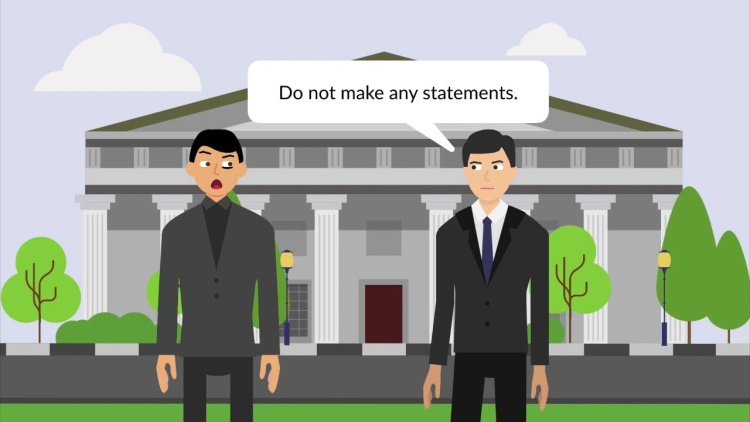Spano v. New York
United States Supreme Court
360 U.S. 315 (1959)
- Written by Sarah Venti, JD
Facts
Vincent Spano (defendant), accompanied by his lawyer, turned himself in to the police a few days after he shot a man in a candy store following a barroom brawl. Spano, 25, had no prior history with law enforcement, although he had a history of emotional instability. Spano’s attorney left him in police custody after advising him not to answer any questions. Numerous police officers began to interrogate Spano at about 7:00 p.m., and the questioning continued for almost eight straight hours. Spano repeatedly told the police he was not going to answer their questions and made repeated requests for his attorney to be present, all of which were denied. Gaspar Bruno, an old friend of Spano’s who had become a police officer, was brought in to question Spano when the police could not get him to confess. Bruno played to Spano’s sympathies and explained that he would lose his job if he could not get Spano to confess. Bruno’s job was never in jeopardy. After four sessions with Spano, Bruno finally got Spano to confess, and Spano answered the prosecutor’s leading questions. The trial court allowed the confession to be admitted into evidence, instructing the jury members to consider it only if they believed it was made voluntarily. The jury convicted Spano, and he was sentenced to death. The New York Court of Appeals affirmed his conviction and sentence. The United States Supreme Court granted certiorari.
Rule of Law
Issue
Holding and Reasoning (Warren, C.J.)
Concurrence (Stewart, J.)
What to do next…
Here's why 899,000 law students have relied on our case briefs:
- Written by law professors and practitioners, not other law students. 47,000 briefs, keyed to 994 casebooks. Top-notch customer support.
- The right amount of information, includes the facts, issues, rule of law, holding and reasoning, and any concurrences and dissents.
- Access in your classes, works on your mobile and tablet. Massive library of related video lessons and high quality multiple-choice questions.
- Easy to use, uniform format for every case brief. Written in plain English, not in legalese. Our briefs summarize and simplify; they don’t just repeat the court’s language.





